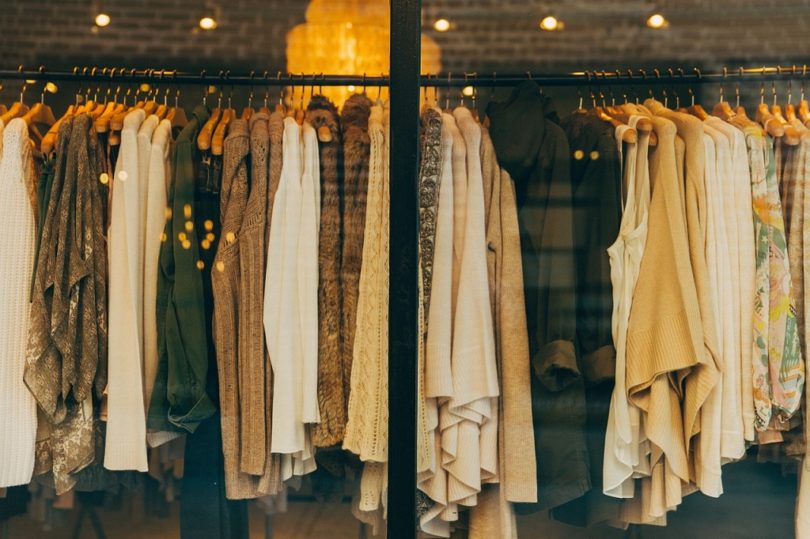The Reason Why Boutique Fashion is the Ultimate Option for Distinct Design
The Reason Why Boutique Fashion is the Ultimate Option for Distinct Design
Blog Article
Sustainable Fashion: Exactly How Eco-Friendly Clothing Is Shaping the Future of Style
As the fashion business encounters increasing scrutiny over its environmental impact, the increase of lasting style uses an encouraging alternative that straightens style with eco-friendly responsibility. Utilizing innovative products such as recycled fibers and plant-based fabrics, together with innovative methods like digital and 3D printing, designers are redefining what it means to be fashionable in the modern age. Concurrently, the growing popularity of upcycling and thrift society is cultivating a shift in the direction of a circular economic climate. Yet, how does this activity genuinely affect the future trajectory of style, and what difficulties exist in advance in its prevalent adoption?
Cutting-edge Lasting Materials
As the style industry grapples with its environmental impact, ingenious lasting materials have arised as an essential option for lowering ecological impacts. Among one of the most appealing materials are those stemmed from all-natural, sustainable resources, such as organic cotton, hemp, and bamboo. These materials not just reduce reliance on fossil gas however likewise minimize hazardous pesticide usage and water intake. Organic cotton, as an example, uses significantly much less water than traditional cotton and gets rid of the requirement for harmful chemicals, thus preserving soil health and wellness and biodiversity.
In addition to plant-based materials, innovations in biofabrication have actually resulted in the advancement of lab-grown textiles. Mycelium natural leather, originated from mushroom roots, offers a functional and biodegradable choice to pet leather. Its production results in significantly lower carbon discharges and water usage, making it a more sustainable alternative for stylist seeking to line up with environment-friendly methods.
Recycled materials are additionally getting traction, with polyester made from recycled plastic containers standing for a significant innovation. This development not only draws away plastic waste from land fills and seas however likewise decreases energy usage contrasted to generating virgin polyester. With each other, these materials underscore the capacity for an extra sustainable apparel industry, leading the means for environmentally conscious layout and manufacturing.
Eco-Conscious Production
Structure on the developments in sustainable products, the apparel industry is also re-evaluating its production processes to better lower ecological impact. Trick methods include reducing water intake, minimizing carbon emissions, and removing dangerous chemicals. By taking on closed-loop systems, makers aim to reuse water and energy successfully, substantially lessening waste. The combination of renewable power sources, such as solar and wind power, right into manufacturing facilities further cuts reliance on fossil gas.
An additional vital element is the decrease of harmful chemicals typically used in dyeing and completing fabrics. Eco-conscious makers are moving towards plant-based dyes and waterless dyeing modern technologies, which not just safeguard regional communities yet additionally improve employee safety and security. Developments like electronic printing lower material waste and energy usage, offering a cleaner alternative to typical methods.
Moreover, transparency and traceability have become extremely important. With the innovation of blockchain modern technology, companies can currently offer thorough insights into their supply chains, making sure eco pleasant and honest methods at each action. This openness constructs customer depend on and motivates brands to maintain high sustainability criteria. As the need for eco-conscious products expands, suppliers are compelled to introduce, guaranteeing that the future of fashion is both sustainable and elegant.
The Surge of Upcycling
Upcycling, a transformative method in sustainable style, includes artistically repurposing disposed of materials right into new, top quality items. This ingenious approach not only reduces waste yet additionally decreases the need for basic materials, therefore minimizing the environmental influence of clothes production. By reimagining and rebuilding existing items, designers and style brands have the ability to infuse originality into their collections while advertising ecological duty.

In addition, the upcycling movement has actually encouraged independent developers and small businesses, that usually lead in technology as a result of their agility and creativity. By maximizing the bountiful accessibility of unused products, these entities add to a circular economy, showing that fashion can be both trendy and lasting. Via upcycling, the market takes substantial strides in the direction of a more liable and mindful future.
Thrift Society's Impact
The expanding thrift society substantially reshapes the landscape of lasting style, highlighting the importance of conscious consumption. This cultural change encourages customers to embrace previously owned clothes, therefore decreasing the need for new garment production and decreasing environmental influence. Thrift buying not just extends the lifecycle of garments but likewise decreases the carbon footprint related to production, carrying, and getting rid of garments.
A key element of second hand society is its democratization of fashion. By using a vast array of styles from different periods at economical rates, second hand stores make fashion easily accessible to a more comprehensive target market. This accessibility promotes a feeling of originality and creative thinking, as consumers mix and match distinct pieces to curate individualized closets without adding to the fast fashion cycle.
Moreover, thrift society advertises circularity in style, lining up with the principles of a circular economy. As more customers and designers embrace second hand culture, the fashion industry is forced to adapt, integrating lasting practices to meet the growing need for eco-conscious options.

Future Trends in Style
Style's advancement is progressively shaped by technical technologies and sustainability-driven efforts. As customers come to be more eco aware, the More about the author sector is reacting with groundbreaking developments that redefine the future of design. One prominent fad is the increase of digital fashion, where online garments can be used in augmented truth environments, considerably lowering textile waste. This change not only deals with the digital-savvy consumer but additionally decreases the ecological impact traditionally connected with garment production.
Furthermore, the combination of blockchain modern technology provides new opportunities in openness and traceability, permitting customers to validate the sustainability qualifications of their apparel. boutique fashion. This guarantees accountability in supply chains and advertises honest sourcing methods. 3D printing is yet another development that assures to change making procedures by allowing on-demand manufacturing, thereby decreasing excess inventory and waste
As these modern technologies grow, they are poised to transform the style landscape, combining style with sustainability. The future of style, consequently, exists in a seamless mix of innovation, development, and ecological duty.
Final Thought
The change of the fashion sector with sustainable techniques suggests a pivotal change towards ecological liability. The combination of ingenious products, eco-conscious manufacturing methods, and the embracement of upcycling and thrift society highlights a dedication to lowering environmental footprints. As these practices get momentum, they redefine the industry's story by focusing on honest and sustainable selections. This advancement not just lines up fashion with environmental sustainability but also sets a precedent for future patterns focused on duty and advancement.
As the style market encounters raising analysis over its environmental influence, the rise of lasting style provides a promising option that lines up style with environmental responsibility.As the fashion market grapples with its environmental effect, cutting-edge sustainable materials have actually arised as an important service for decreasing eco-friendly footprints. Together, these products emphasize the potential for a more lasting fashion sector, paving the way for ecologically aware style and production.
Building on the technologies in lasting materials, the style market is additionally re-evaluating its manufacturing procedures to further decrease environmental impact. boutique fashion.Upcycling, a transformative method in sustainable fashion, involves artistically repurposing thrown out products into brand-new, top notch products
Report this page